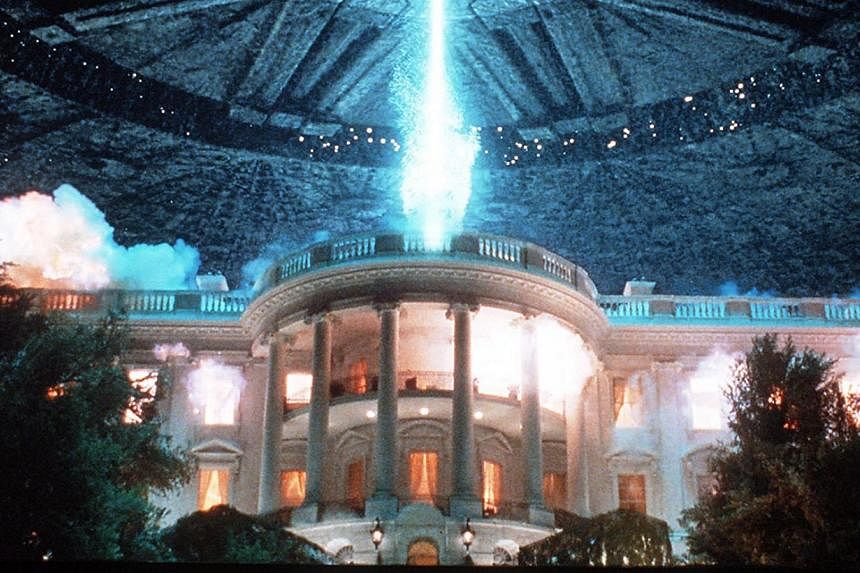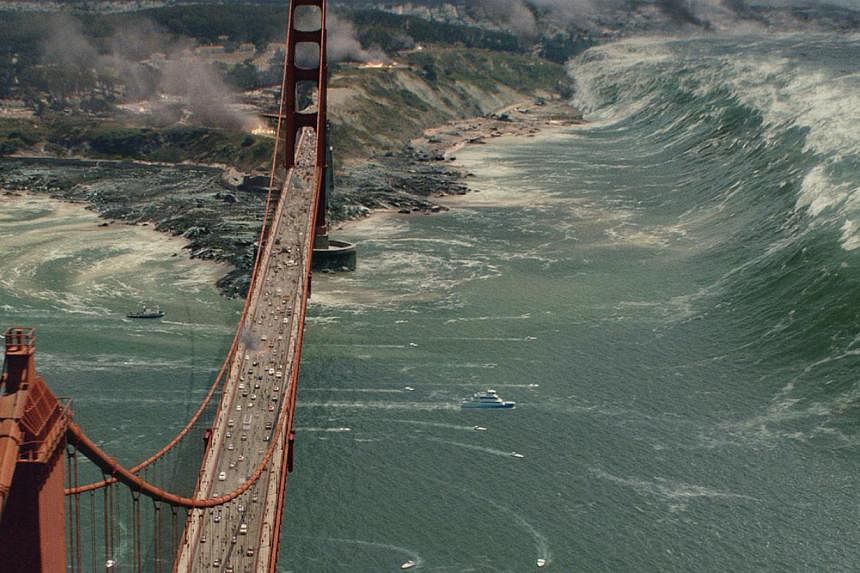Disaster movies have a bad rep. Critics sniff at them as formulaic shlock, filled with bad science, overblown action setpieces and naked emotional manipulation. Even its audiences know that what they are watching is, at best, a theme park ride, and at worst, junk food.
Even San Andreas director Brad Peyton, 34, seems to be wary of the label.
"This is going to sound naive, but I never looked at it as a disaster movie," he tells Life!. What appealed to him was the family drama between Ray (Dwayne Johnson), wife Emma (Carla Gugino) and daughter Blake (Alexandra Daddario).
"The disaster movie stuff, in some ways, is secondary," he says.
It is hard to blame Peyton for wanting to make his own mark; after all, when one thinks of tsunamis, earthquakes, floods, firestorms, tornadoes and asteroids striking Earth, one name comes to mind: Roland Emmerich, the king of the disaster movie, almost singlehandedly defined the genre in the last two decades and is responsible for its slightly disreputable status today.
It was not always the case. In the 1970s, movies such as Airport (1970), The Poseidon Adventure (1972), The Towering Inferno (1974) set the template - they featured an ensemble cast of stars each representing a cross-section of society and personality types, working together - or against one another - to survive in a hostile environment.
These were mass-market popcorn movies, but they featured somewhat realistic scenarios, moderate amounts of suspense and action, and careful pacing.
While the interpersonal melodrama played out, audiences would see the inner workings of a major piece of engineering - a capsized ship, a building, or an airport - often guided by an expert who would, by coincidence, happen to be among the survivors.
Another strand of DNA that San Andreas shares with its ancestors is how the films are often sold as experiences featuring new cinema technology. In the past, it might have been 3-D, or surround sound.
San Andreas is being released in some countries in 4DX. With it, patrons are rocked in tilting chairs, blasted by water sprays in rain scenes or bathed in smells from a dispenser in other scenes.
Peyton argues that his favourite movie, Titanic (1997), could also be classified as a disaster film and he has a point - it is one form of disaster, as are alien invasions, viral pandemics and monster attack movies.
But Titanic, with its disaster happening only midway through the film, its paucity of narrow escapes and leading man heroics, seems almost archaic now.
It was the knockout success of Emmerich's alien invasion drama Independence Day (1996) that encouraged him to carry over its over-the-top elements to other works, in which Mother Nature would go berserk as never before. These are the climate-change epic The Day After Tomorrow (2004) and apocalypse flick 2012 (2009).
Emmerich's Nature Is Scary formula relied on computer graphics, outrageously over-the-top scenarios, cardboard-thin characters, the destruction of globally recognisable landmarks such as the Statue of Liberty and comically simplified declamatory dialogue.
The canny German-born director understood that this is how you draw non-English speaking audiences from Beijing to Bonn. And he was right: 2012 became the all-time box-office champ in China in 2009, taking in more than US$74 million in that country, beating even Titanic.
And while Peyton declines to call San Andreas a disaster movie, it bears all the trademarks of a movie made for a global audience - the near-misses, simple dialogue, victims facing one natural calamity after another, and the fall of an iconic landmark, in this case the Golden Gate Bridge.
But it has another ace up its sleeve. Johnson, thanks to his action-man status, is a star worldwide. Peyton knows this and adds that it was too tempting to not make a nod to Johnson's he-man persona. In one scene, his character Ray tears a car door off its hinges to save a driver.
"On the day of the shoot, I was like, 'Is this too much?' I'm not gonna lie. But if anyone can rip a door off a car, it's this guy," he says.



